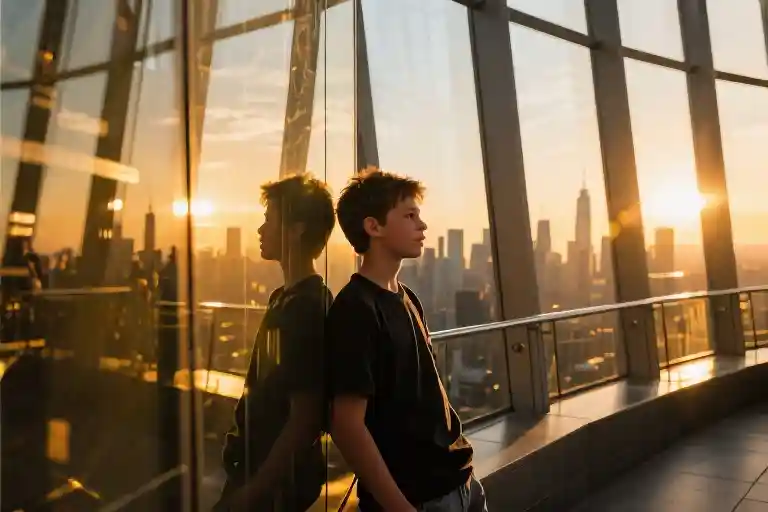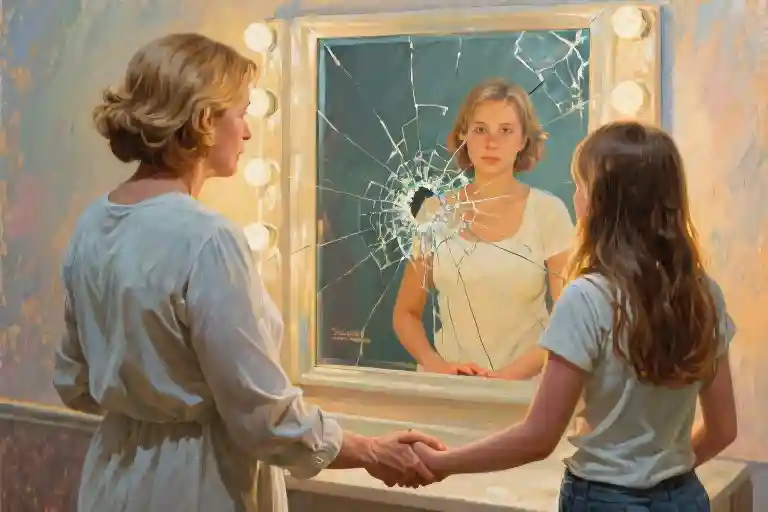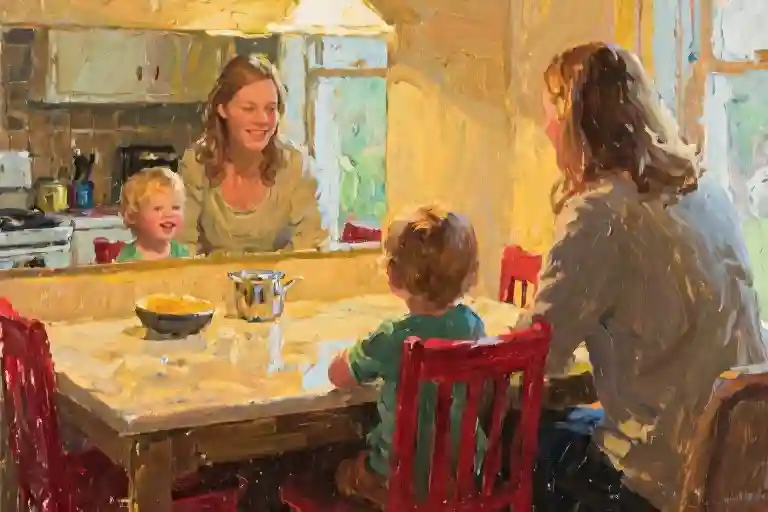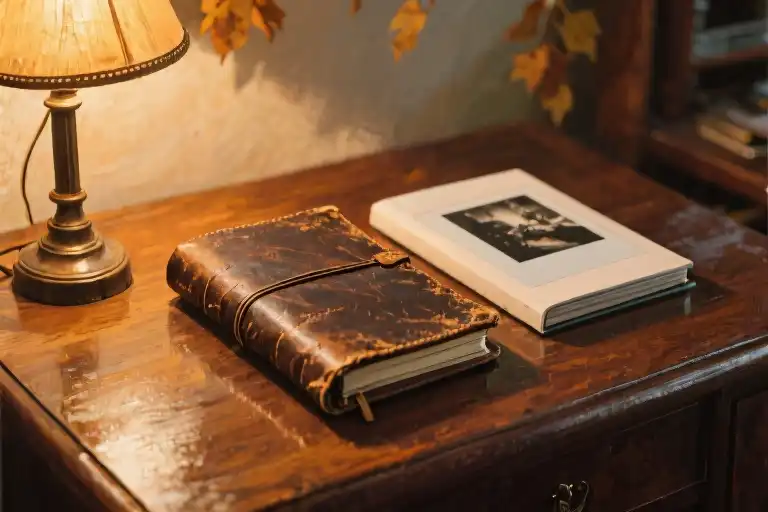The glass panels of Summit One Vanderbilt caught the late afternoon light in a way that made Manhattan look like it was dipped in liquid gold. I raised my iPhone, fingers fumbling slightly with the camera app like they always do—somewhere between an enthusiastic amateur and just another dad trying to capture a moment before it slips away. My son Charlie leaned against the glass with that effortless teenage cool, the city stretching behind him like a living postcard. The shutter clicked.
For once, everything aligned. The golden hour light didn’t just illuminate Charlie; it wrapped around him, bouncing off the geometric patterns of the observation deck’s glass walls. The composition felt accidental yet perfect—his casual stance against the structured angles of the architecture, the warmth of the sun cutting through the crispness of the skyline. Even the smudge on my phone’s lens (because of course there was one) somehow added texture instead of ruining the shot.
I’m not the kind of person who believes in magic, but that photo came close. Charlie, usually allergic to posing for more than two seconds, had somehow channeled his inner magazine cover model. Maybe it was the altitude, or the way the light made everything feel cinematic. Or maybe, like any Gen Z kid, he just knew exactly how to work a camera—even when it was his dad’s perpetually outdated iPhone.
We laughed about it as I showed him the shot. ‘Damn,’ he said, eyebrows lifting in approval. ‘That might be your best one yet.’ High praise from a teenager who communicates primarily in eye rolls and monosyllables. Without thinking, I posted it—just another drop in the endless stream of content flooding social media that day. The likes trickled in, then surged. Friends, family, even a few strangers left heart-eyed emojis in the comments. It felt good, that little burst of validation.
But an hour later, my phone buzzed with a direct message notification. The username was unfamiliar: @Angela_Canvas. Her profile picture showed a woman standing in front of half-finished paintings, her smile wide but her eyes oddly focused—not on the camera, but just slightly to the left of it, as if something off-frame had caught her attention. The first line of her message read: ‘That photo of your son is extraordinary. Have you ever considered its artistic potential?’
And just like that, what should’ve been a simple parenting win—a decent photo, a fleeting moment of connection with my kid—tilted sideways into something I couldn’t quite name yet. The kind of unease that starts as a prickle at the back of your neck, the sort you dismiss until it’s too late to look away.
The Miracle Shot
My fingers fumbled with the iPhone screen as the elevator shot upward through Summit One Vanderbilt. Charlie was doing that thing teenagers do – pretending not to be excited while vibrating with barely contained energy. ‘Just act natural,’ I told him, immediately realizing how ridiculous that sounds when you’re about to dangle over Manhattan in a glass box.
The lighting gods smiled upon us that afternoon. Golden hour transformed the geometric glass panels into a kaleidoscope of warm reflections. I didn’t need professional photography skills to recognize this was special light – the kind that makes even a dad-with-an-iPhone look competent. Three simple settings made all the difference:
- Exposure lock – Tap and hold on Charlie’s face until the AE/AF lock appears. This prevents the camera from freaking out about the bright background.
- Portrait mode – Not just for blurry backgrounds. The studio light setting somehow made the glass reflections glow.
- 0.5x lens – The secret weapon. That ultra-wide angle captured both Charlie’s perfect casual lean and the dizzying cityscape behind him.
Charlie struck his pose without coaching, one elbow resting on the glass as if suspended over New York was his everyday commute. The architectural lines converged behind him like nature’s own leading lines. In that moment, I understood why people obsess over golden hour photography – the light didn’t just illuminate, it sculpted.
‘That’s the one,’ he said, peering over my shoulder at the preview. ‘Hundred likes minimum.’ There it was, the unspoken contract of modern parenting: I provide the photography services, he provides the social media ROI. We’d accidentally stumbled into one of those rare alignments where teenage vanity and parental nostalgia intersected perfectly.
The geometry still gets me. How the building’s diagonal struts framed Charlie’s shoulders. How the triangular glass panels mirrored the angle of his crossed ankles. Most family travel photos look like hostage situations, but this? This looked like one of those sponsored posts from professional travel photographers – except we were just a dad and his phone, a kid and his pose, and a building that turned ordinary light into liquid gold.
The Price of Likes
The numbers came fast, like subway trains during rush hour. 87 likes in the first twelve minutes. 142 by the time we descended in the glass elevator. Charlie kept refreshing his phone with that particular teenage mix of feigned indifference and barely-contained triumph.
I should have noticed two things then: the geotag glowing conspicuously under the photo, and my entire posting history visible to anyone who clicked my profile. But in that moment, riding the dopamine wave of social validation, such details seemed irrelevant. Parenting in the digital age often feels like navigating a museum where every masterpiece has an invisible tripwire.
The notifications kept coming – friends from college, coworkers, that barista Charlie had a crush on. Each vibration triggered a Pavlovian response in both of us, though we pretended otherwise. My son developed an elaborate system of micro-expressions: lip twitch for acquaintances, eyebrow lift for popular kids, full nose wrinkle for relatives. We’d turned human connection into a spectator sport with instant replay.
Around the 200-like mark, I remember thinking how strange it was that complete strangers could now witness my child’s profile against the Manhattan skyline. The observation deck’s waiver mentioned data collection, but nobody reads those. Our faces were being processed by algorithms while we debated whether to get pizza or burgers.
Then the phone buzzed differently. Not the cheerful ‘ping’ of a like, but the submarine sonar tone I’d assigned to direct messages. The screen showed a name I didn’t recognize: Angela. Her profile picture featured a woman standing between half-finished canvases, one hand holding a brush, the other casting a peculiar shadow. That message would cost me three nights’ sleep, though I didn’t know it yet.
What stays with me now isn’t the content of her words (those came later), but how ordinary the moment felt. Just another notification in a sea of digital interactions. No ominous music. No sudden temperature drop. Just a father and son walking toward the subway, arguing about dinner options while something malignant took root in our pockets.
The Canvas Mystery
Angela’s profile gave off that peculiar dissonance so common to curated online personas. The blue verification checkmark next to her name clashed with the emptiness beneath – an artist’s account with no finished artworks displayed, just blank canvases leaning against a studio wall. Three of my photographer friends had followed her back immediately when the notification popped up, lured by the promise of creative connection.
What caught my eye wasn’t the missing portfolio, but the partial painting visible in her header image. Zooming in revealed unsettling details – the abstract strokes formed what looked like architectural blueprints of observation decks, with Summit One Vanderbilt’s distinctive glass rhomboids clearly identifiable. In the lower right corner, barely visible beneath layers of paint, something rectangular disrupted the brushwork pattern. Enhancing the screenshot revealed a pixelated grid that made my stomach drop: a QR code partially obscured by cadmium red.
Charlie would’ve laughed at my paranoia. ‘Dad, it’s just some artsy spam account,’ he’d say between bites of breakfast cereal. But fatherhood rewires your threat detection systems. I found myself googling ‘art scam tactics’ with one hand while keeping the other poised over my phone’s block button. The FBI’s page on social engineering schemes listed the warning signs: verified accounts with minimal activity, overly personal compliments (‘Your son has such photogenic cheekbones!’), and that telltale urgency in their first message (‘We must discuss this opportunity before sunset!’).
My thumb hovered over the reply field as morning light streamed through our kitchen windows – the same golden hue that had bathed Charlie’s face in that now-suspicious photo. The reflection in my coffee mug showed the exact geometric distortion from Summit’s glass panels, warping my tired expression into something resembling the blurred QR code on Angela’s canvas. Coincidence makes poor comfort when your teenager’s face might be part of someone’s digital collage.
What unsettled me most wasn’t the potential scam, but how effortlessly our family moment had been absorbed into New York’s endless performance art piece. Every tourist snapping selfies at that observation deck became unwitting extras in each other’s content. The real privacy violation wasn’t Angela’s message, but my own complicity in turning Charlie’s unguarded confidence into public spectacle. I’d framed the shot carefully to exclude strangers, never considering how the internet would crowd into the margins.
The painting in her profile kept pulling me back. However you adjusted the contrast, that half-hidden code refused to resolve into legibility – a perfect metaphor for parenting in the surveillance age. We crop out obvious dangers while missing the data trails our children scatter like breadcrumbs. That afternoon, I finally noticed what had been staring back all along: the reflection in her studio window showed not canvases, but rows of glowing smartphone screens. Every one displayed a different visitor’s Summit One Vanderbilt photo.
Still, part of me wanted to reply. Not to Angela, but to the version of myself that had stood there marveling at accidental artistry. The father who believed some moments could exist outside the grid. My finger moved toward the keyboard just as Charlie’s laughter floated downstairs – real, unposed, and blessedly offline.
The screen glowed in the dim light of my home office, that blinking cursor in the reply field pulsing like a heartbeat. Angela’s message remained open – polite yet peculiar in its vagueness, complimenting Charlie’s ‘artistic presence’ while subtly probing about our location during the shoot. My thumb hovered over the keyboard, caught between parental caution and the flattery of a stranger recognizing my accidental photographic triumph.
What unsettled me most wasn’t the message itself, but the background of her profile picture. Those blank canvases surrounding her seemed deliberately staged, their pristine whiteness too perfect against the splattered paint on her smock. Zooming in revealed something I’d missed earlier – in the reflection of a gilded frame behind her left shoulder, the distinctive diamond-shaped glass panels of Summit One Vanderbilt shimmered faintly. Either she’d been there recently, or this was an unsettling coincidence.
The final detail came when I tilted my phone at an angle. One canvas near the edge of the composition wasn’t entirely blank after all. The faintest outline of geometric shapes mirrored the exact perspective from which I’d photographed Charlie hours earlier, as if someone had traced our vantage point before we’d even arrived. My amateur parenting photography had somehow crossed into someone else’s carefully prepared narrative.
That’s when I noticed the timestamp on her follow request – thirty-seven minutes before we’d even stepped onto the observation deck.





